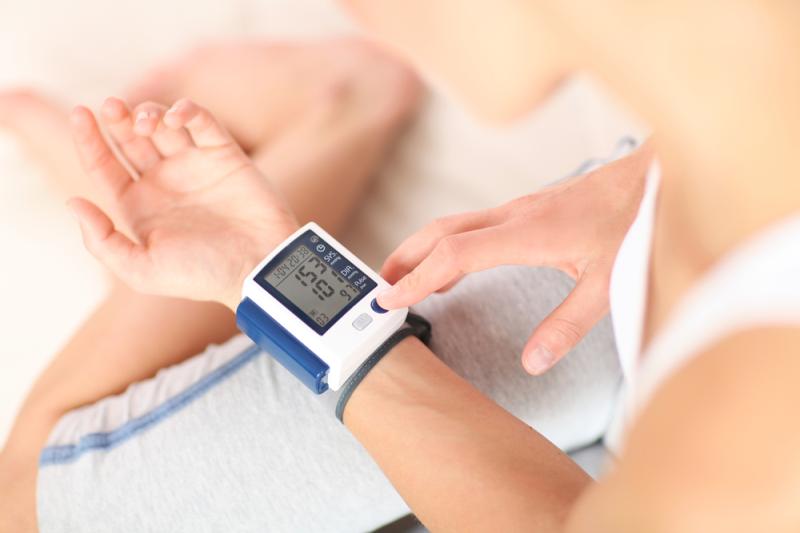
Compliance to hypertension management affects the likelihood of wearing blood pressure (BP) monitoring devices in older adults, according to a recent China study.
“Our results revealed that individuals reporting lower compliance with healthy lifestyle and medication use … were more likely to use mHealth BP monitor over the 30-day period,” researchers said, adding that more than half kept the device on throughout the study duration.
Of the 212 enrolled participants (mean age, 71.32±6.81 years; 51.89 percent female), 50.94 percent uploaded BP devices via the wearable device at least once daily over the 30-day study period. Users of the wristband device tended to have more concomitant diseases. [Brain Behav 2020;doi:10.1002/brb3.1599]
In addition, participants who used the BP monitoring device had significantly lower body mass index (24.07±3.17 vs 25.34±3.67 kg/m2; p=0.008) and waist circumference (87.97±10.09 vs 92.13±11.36 cm; p=0.005) than their nonuser counterparts. Hip circumference was also lower, with the difference reaching borderline significance (95.15±9.09 vs 97.33±7.41 cm; p=0.058).
The researchers also found that compliance with different areas of hypertension management differed between users and nonusers. Nonusers, in general, had higher compliance scores overall (49.75±6.63 vs 45.08±7.55; p<0.001) than their comparators who used the device.
This was driven mainly by better compliance of nonusers in terms of intention (13.29±2.50 vs 11.81±3.09; p<0.001), lifestyle (7.57±2.19 vs 5.69±2.64; p<0.001), attitude (10.60±1.71 vs 9.67±2.12; p=0.001) and medication use (3.48±0.99 vs 3.04±1.13; p=0.003). Compliance was measured using the Compliance of Hypertensive Patients scale.
This was confirmed through binary logistic regression analysis, which found that total compliance score (p=0.002) and the specific domains of medication use (p=0.04) and lifestyle (p=0.000) were significant predictors of device usage.
On the other hand, there were no between-group compliance differences in the domains of responsibility (7.61±0.84 vs 7.61±0.84; p=0.962) and smoking and drinking (7.21±1.43 vs 7.27±1.20; p=0.753). Diastolic (87.10±12.07 vs 88.43±14.22 mm Hg; p=0.463) and systolic (147.02±16.86 vs 151.05±22.34 mm Hg; p=0.142) BP were likewise comparable between users and nonusers.
Interestingly, fluency with technology also showed no significant effect on the likelihood of using the device. For instance, scores in computer skills were comparable between users and nonusers (7.02±3.29 vs 7.41±4.09; p=0.439). The same was true for email (p=0.453) and web navigation (p=0.540) skills, as well as for the total cumulative fluency score (p=0.453).
Notably, whether or not the wearable BP monitor was used did not appear to have significant impacts on the physical (p=0.597) and mental (p=0.532) component summary scores of the patients’ health-related quality of life.
“To the best of our knowledge, [this] is the first study to assess the associated influencing factors of mHealth technology adherence among [older adults] from a resource-limited community,” the researchers said, pointing out that several weaknesses, such as its cross-sectional design and very specific sample demographic, may have limited the generalizability of the findings.
“Future studies may extend to more diverse ethnic populations with various background and cohort studies to explore engagement factors of users,” they added.